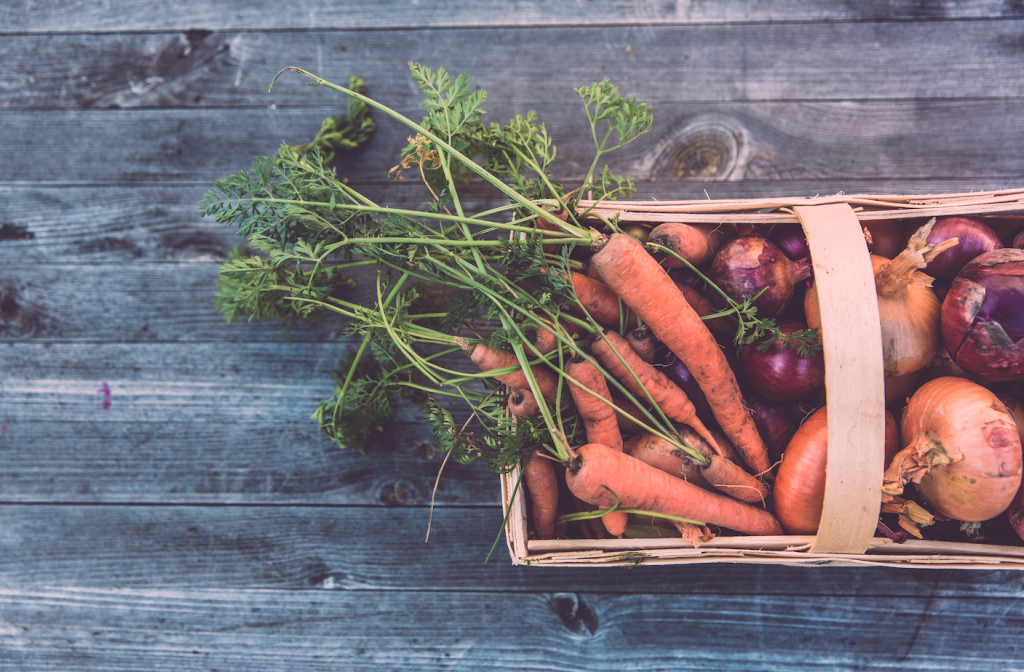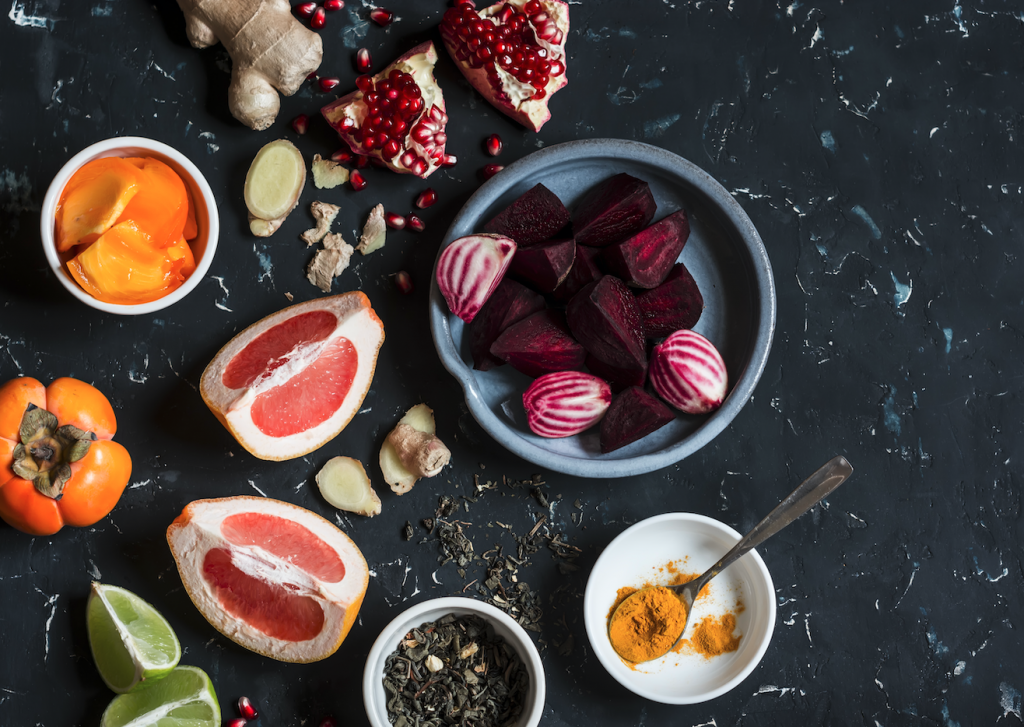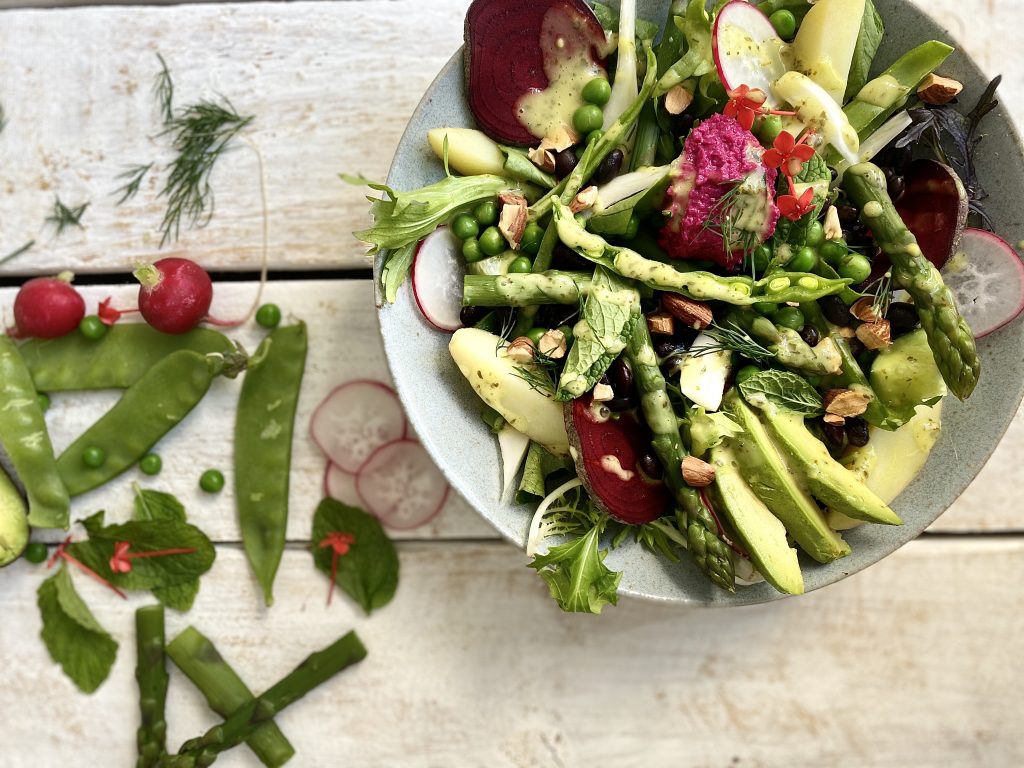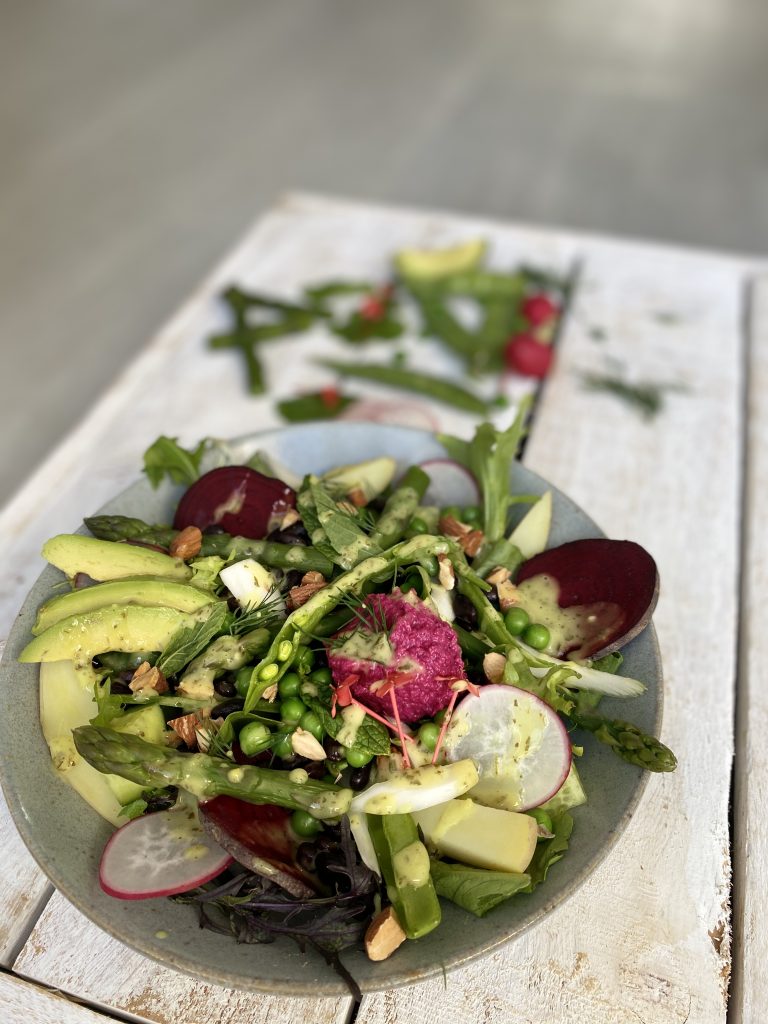As we step into Spring, let’s look at some of the main benefits of eating organic, local and seasonal produce. Plus we offer you a delicious Spring Abundance Salad recipe to enjoy all of the beautiful Spring produce now available.
Why Eat Organic?
It’s become much more common knowledge these days that organically grown food has a wealth to offer both your body and the planet. Organic food has more vitamins, minerals and nutrients than conventional food and is void from the chemicals, pesticides and toxins that dominate conventional food which can be damaging to the body’s immune system and nervous system. Whilst conventional produce may appear fairly harmless, chances are it’s been sprayed by at least one of the 400 chemical pesticides routinely used and allowed in conventional farming.
Statistics also indicate that the levels of trace minerals in conventional produce have fallen by up to 76% since 1940. That means we are not getting nearly as many of the nutrients we could be getting from fresh fruits and vegetables when eating conventionally. In contrast, organic produce is on average 25% more nutrient-dense than its conventional counterparts, with more vitamins, minerals, antioxidants and essential fatty acids.

Why Eat Local?
You may not realise that produce that is purchased in the supermarket often has been in transit or cold-stored for days, weeks or even months, especially if travelling from overseas. Shipping food and produce long distances is a standard practice in the food industry. It is estimated that the average meal travels about 1500 miles to get from farm to plate!
This long-distance, large-scale transportation of food consumes large quantities of fossil fuels and also generates great quantities of carbon dioxide emissions. Furthermore, in order to transport food long distances, much produce is picked while still unripe and then gassed to “ripen” it after transport, or it is highly processed in factories using preservatives to keep it stable for transport and sale. The longer it sits in storage or transit, the more nutrient depletion can occur.
Produce from your local farmer’s market on the other hand, has often been picked within days or sometimes even hours of purchase- making the food both fresher, far tastier and more nutritionally dense. Locally grown, fresh food actually tastes like real food! Food grown locally is harvested when ripe and doesn’t have to be fumigated, refrigerated, packaged for long-distance travelling or altered for long shelf-life.
Knowing where your food is coming from and being able to speak to your farmers enables you to establish healthy relationships which allow communities to flourish and thrive. Supporting local wherever you can is the key to a sustainable future.

Why Eat Seasonally?
It’s important to define exactly what “eating seasonally” means. Essentially, it’s about knowing when certain fruits and vegetables grow naturally in your climate, and then eating them only in those seasons. Shopping at a farmer’s market inherently lends itself to eating in season, as the majority of the produce there is grown nearby and picked at its peak. It gets a lot trickier at the grocery store, however, where fruit and vegetables are shipped in year-round from all over the world. Today it’s so easy to transport food long distances that we take it for granted that we can eat fresh berries or have avocado toast every day! Many people don’t even know anymore what fruits and vegetables are in season where they live.
Consuming fruits and vegetables in season has an impact on the food’s nutritional value- you get the maximum amount of nutrients the produce has to offer when it’s naturally picked at its ripest. In a study monitoring the vitamin C content of broccoli, it was found that broccoli grown during its peak season had a higher vitamin C content. When foods are grown out of season, they aren’t able to follow their natural growing and ripening rhythms.
There’s no doubt about it that eating produce when it is in season simply tastes better. The goal of large commercial farms is to produce a volume of product to meet high demand. Unfortunately, quantity and appearance override taste. Selective breeding favors uniform ripening and shelf life over flavor, leading to lacklustre tomatoes and tasteless strawberries. On the other hand, naturally ripened fruits and vegetables grown and picked in season are typically full of flavor and nutrients.
Another bonus- eating fruit and vegetables in season means they are abundant and therefore are often available at a lower price. For example, summer is berry season, so that’s why strawberries and other berries are so cheap during the summer. A great tip for saving money on healthy food is to buy in-season produce.
It is interesting to know that eating seasonally can also support your body’s natural nutritional needs. For example, in winter we are provided by nature all things citrus, these are particularly high in Vitamin C which is very important for preventing infections such as colds and flu’s. Summer foods such as stone fruits provide us with extra beta-carotenes and other carotenoids that help protect us against sun damage, they also provide more sweetness for an energetic summer, as well as salad vegetables for those tasty cool summer salads.
What is in season this Spring?
- Asparagus
- Bean Sprouts
- Garlic
- Kale
- Leafy Greens
- Mushrooms
- Peas
- Radishes
- Rhubarb
RECIPE:
Spring Abundance Salad

Ingredients:
- 1 small beetroot finely sliced
- 2 cups of fresh leafy greens
- 2 radish finely sliced
- 1 cup of snow peas sliced lengthways
- 1/4 cup peas
- 2 medium or 3 small potatoes chopped and steamed
- 1 bunch Asparagus chopped and steamed
- 1 avocado sliced
- 1 cup of cooked black beans
- 2 tablespoons of dill chopped
- 2 tablespoons of mint chopped
- 2 tablespoons of almonds chopped
Arrange all of the salad ingredients in two bowls.
Drizzle with Green Goddess Dressing and top with Beetroot Hummus.
Enjoy!
Green Goddess Dressing
- 1 cup of mixed fresh herbs (basil, parsley, coriander, mint or your choice)
- 2 tablespoons lemon juice
- 2 tablespoons olive oil
- 1 teaspoon maple syrup
- 1 tablespoon almond butter
- 2 teaspoons nutritional yeast
- ½ teaspoon salt
- 1 teaspoon tamari
- 1-inch piece of ginger, chopped
- ¼ of a ripe avocado
- 1 cup of filtered water
Place all of the ingredients in your blender and blend until smooth and creamy. Pour into a squeezy bottle for easy use, or a glass jar, and store in the fridge until ready to use. This will make extra but will keep in the fridge for 5 days and is delicious on any salad!
Beetroot Hummus
- 1 ¾ cup of chickpeas
- 1 medium beetroot grated
- 3 tablespoons lemon juice
- 3 tablespoons tahini
- 1 teaspoon salt
- 1 teaspoon cumin
- ½ teaspoon smoked paprika
- 2 tablespoons olive oil
Add all ingredients to your food processor and process until smooth. Store in an airtight container or glass jar in the fridge for 3-4 days.


